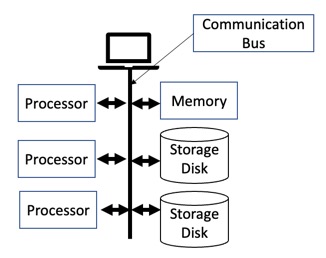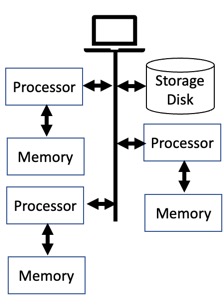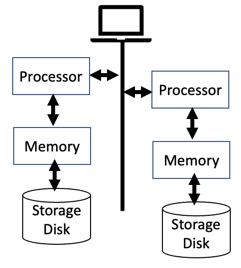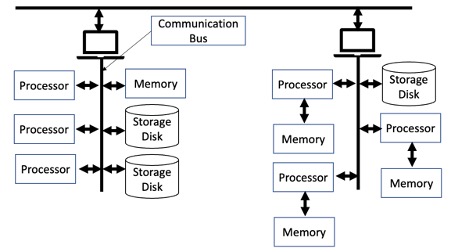Parallel Database Architecture in DBMS – Advantages & Disadvantages Jitendra Ajmera The Crazy Programmer
In this kind of architecture multiple processors, memory drives, and storage disks are associated to collaborate with each other and work as a single unit.
In this type of database system, the hardware profile is designed to fulfill all the requirements of the database and user transactions to speed up the process.
The arrangement of hardware is done in a parallel way to enhance input/ output speed and processing.
This database system is used where we need to handle extremely large amounts of data. The size of data is not fixed and increasing rapidly.
In this condition when the upcoming data amount is unpredictable, the fixed hardware profile sometimes goes to failure. To prevent this the hardware is arranged in such a manner that it can handle any amount of data flow.
In this section four things are main to consider in hardware profile as per given below:
- Processor
- Memory
- Storage disk
- Communication bus
As per the arrangement parallel database system can be further classified into four categories:
- Shared Memory
- Shared Storage disk
- Independent resource
- Hierarchical structure
In these, all structures communication bus is a medium for all other peripherals to communicate and send receive input/output data.
Shared Memory

In a shared memory structure all the processors available in the system uses common memory for execution.
Shared Storage Disk

In the shared Storage disk structure, all the processors use the common Storage disk. This kind of storage disk is often called a cluster because it holds a very large amount of non-associated data.
Independent Resource

In the Independent resources structure, there are individual pairs available. Each pair has its own processor, memory, and storage disk.
Hierarchical Structure

This structure is a hybrid combination of all three above mentioned structures.
Advantages of Parallel Database System
- This type of database system has a very high computing speed so it can manage applications with a large amount of data.
- This system can handle a very large number of transactions per second, so these are used to speed up the processing of transactions on data based systems or servers.
- In these systems throughput and response time are very high.
Throughput: Number of tasks completed in a given specific time period.
Response time: The time duration a single task actually occupies to complete itself from the all-over time allotted.
Disadvantages of Parallel Database System
- The start-up cost is very high in this system. Start-up cost actually means the time a single task (from all tasks allotted) uses to start itself.
- Due to shared resources, each task has to wait for the required resource to become available.
- Deadlock conditions may occur.
The post Parallel Database Architecture in DBMS – Advantages & Disadvantages appeared first on The Crazy Programmer.
from The Crazy Programmer https://ift.tt/3zVO3Su
Comments
Post a Comment